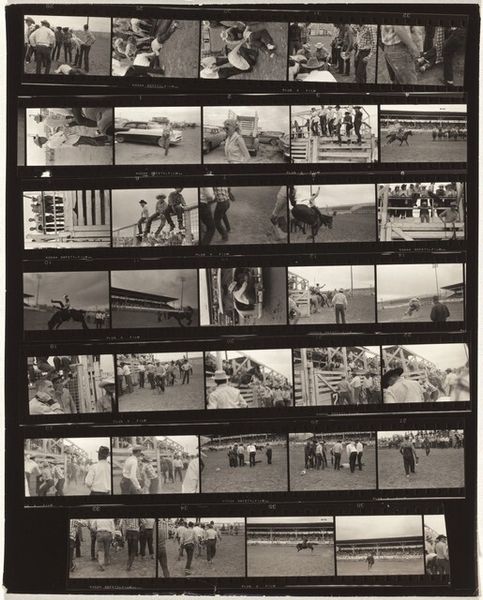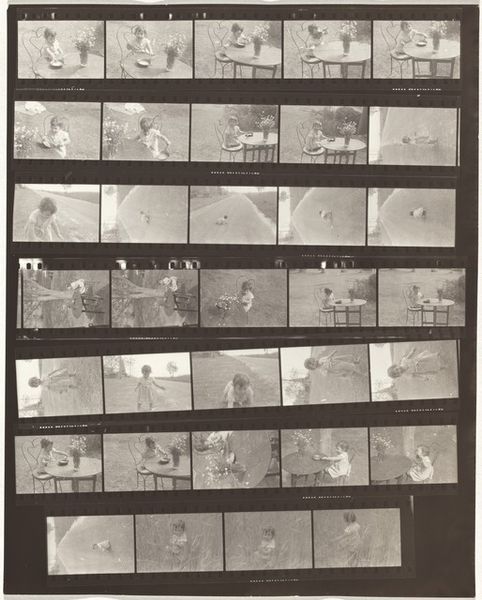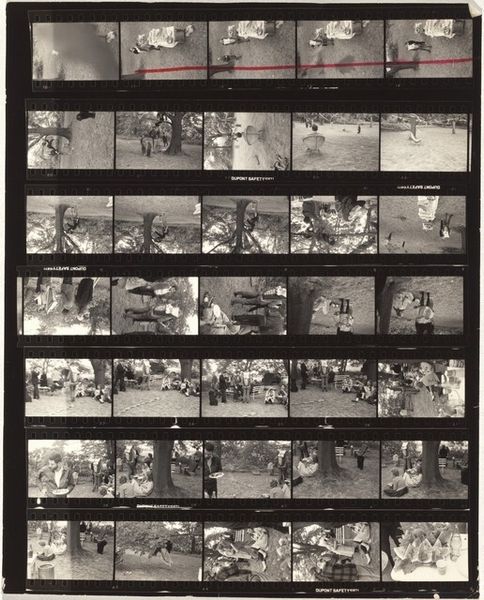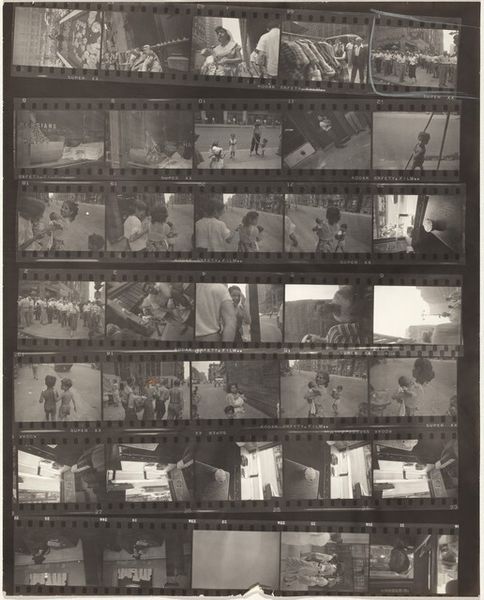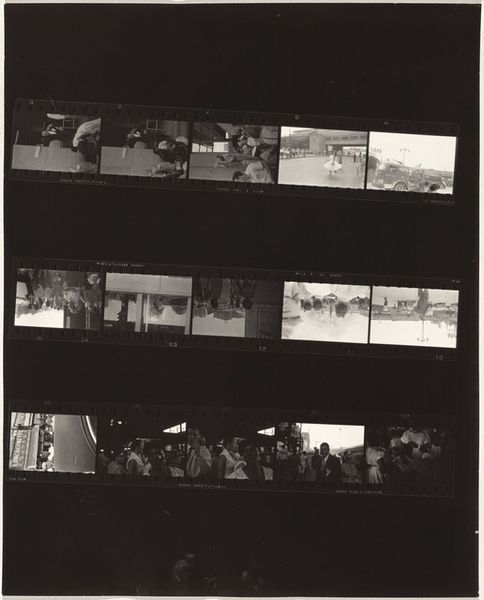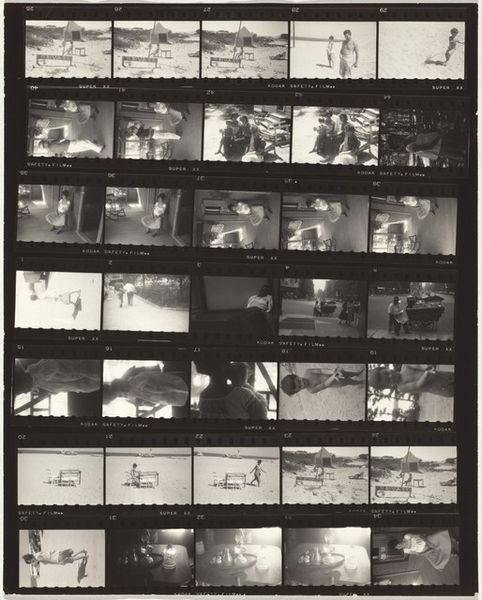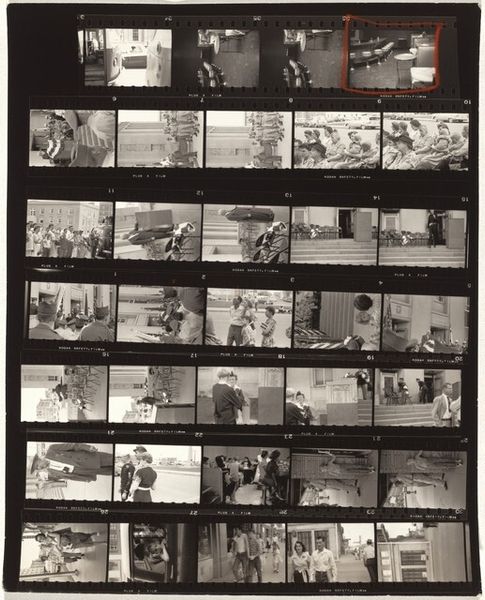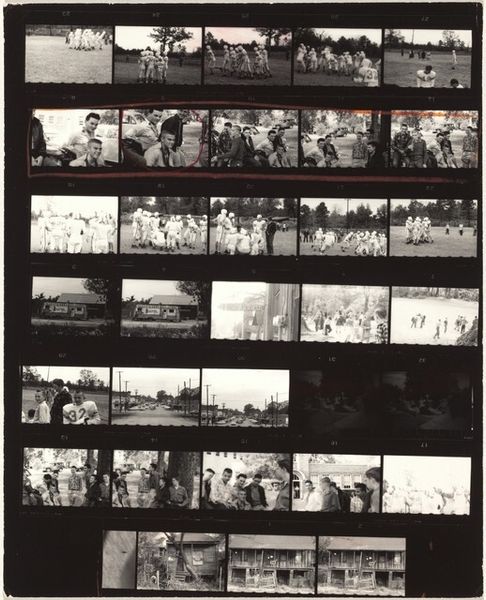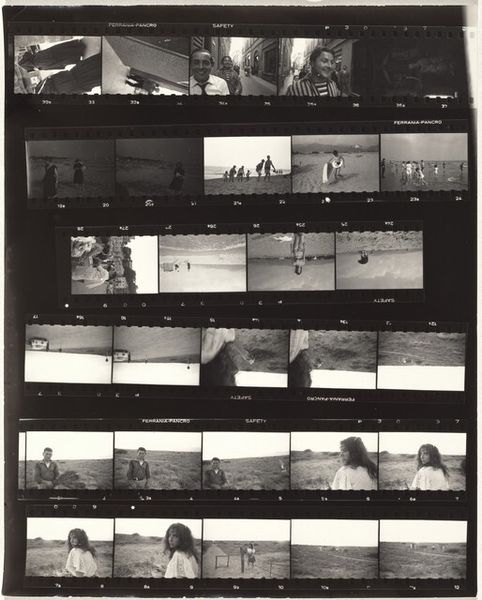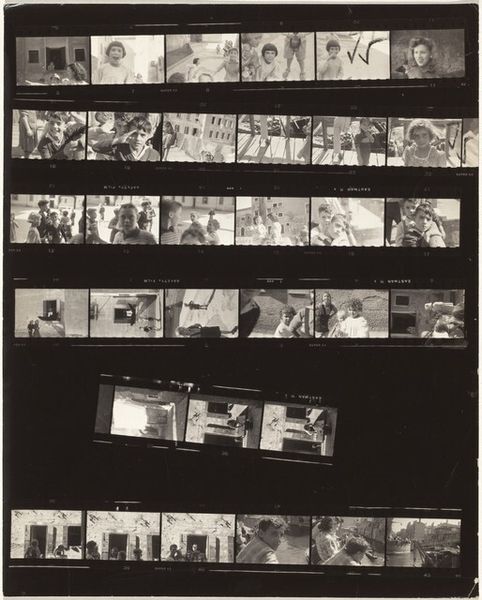
Dimensions: overall: 25.3 x 20.2 cm (9 15/16 x 7 15/16 in.)
Copyright: National Gallery of Art: CC0 1.0
Editor: So, this is Robert Frank's photography of Allan Kaprow’s 1957 performance piece "Party No. Number." What I find intriguing is how Frank captured what feels like an intimate, fleeting experience through film. What's your interpretation of this series of photographs? Curator: This work is incredibly rich in layers, especially when we consider the context of the late 1950s. The "Happening," as Kaprow termed it, sought to break down the barriers between art and life. Frank's photography amplifies this by capturing fragmented moments, mirroring the way we experience reality. It's about dismantling the hierarchy, isn't it? Frank's documentary approach democratizes the art experience, refusing to idealize or aestheticize. It's less about spectacle, and more about what it felt like to be a member of that generation trying to find meaning in post-war America. What do you see in the staging of Kaprow's work here? Editor: Well, it seems almost chaotic, not in a bad way, but kind of freeing, maybe, because there’s not one clear focal point, like there are a lot of individuals in this place performing and interacting. So are you suggesting the photography and "Happening" create new forms of accessibility by questioning societal rules and aesthetic standards of the time? Curator: Precisely. Both Frank and Kaprow invite us to question the very structures that define art and, by extension, society. This piece challenges viewers to participate in the creation of meaning rather than passively consume it, offering a powerful statement on individual agency and community experience. Editor: I see, viewing art not as a spectator but engaging as an actor. That definitely adds a whole new perspective. Curator: It shifts the power dynamic and enables greater opportunities for the audience. What do you take away from seeing this “performance” displayed through images, without actually seeing it live? Editor: I realize this documentary-style provides valuable insight into how we confront issues of identity and engagement, making it not only about a party in 1957 but, as well as a lasting narrative on selfhood and community. Curator: Exactly. By questioning conventions, this collaborative artwork captures this continuous evolution.
Comments
No comments
Be the first to comment and join the conversation on the ultimate creative platform.
